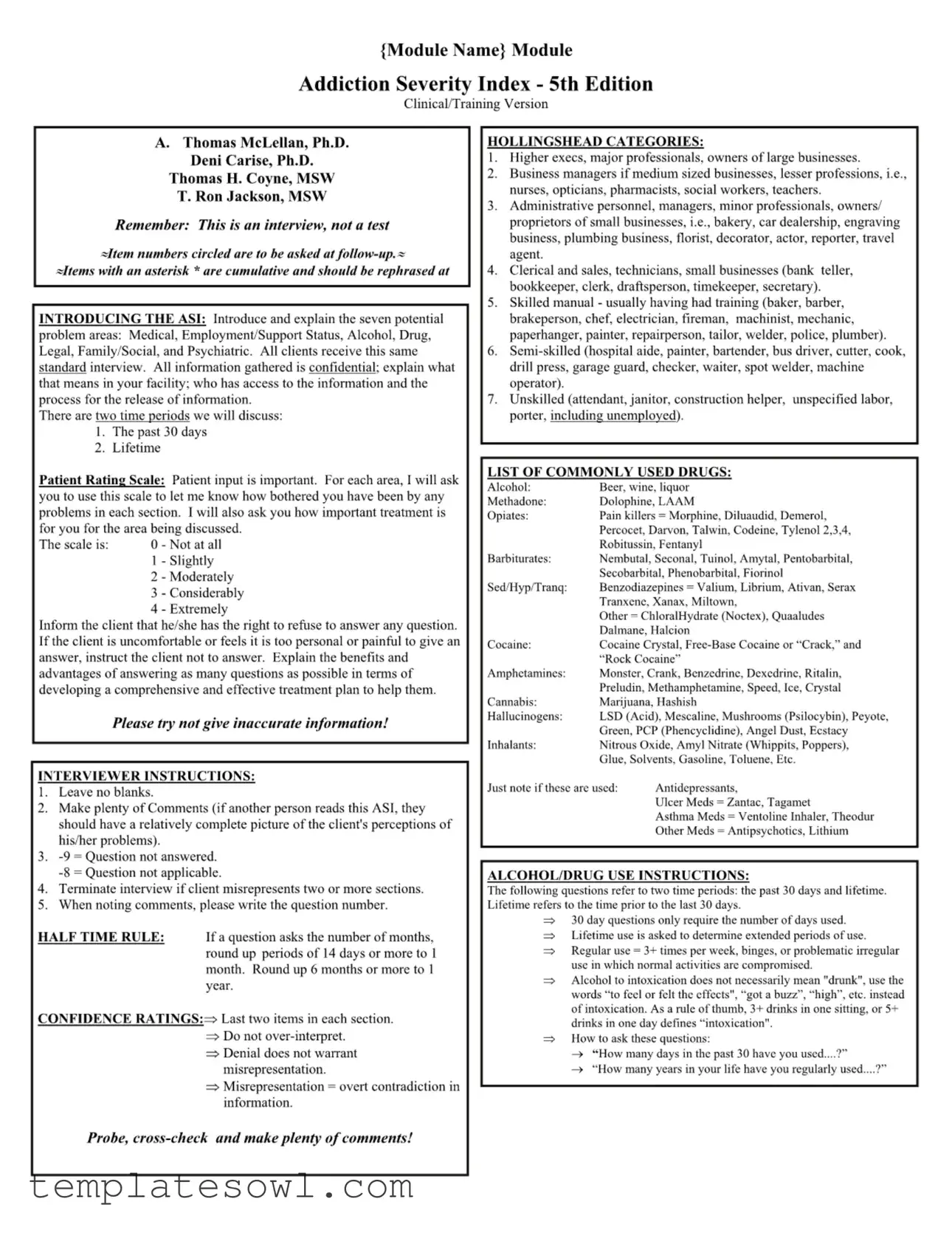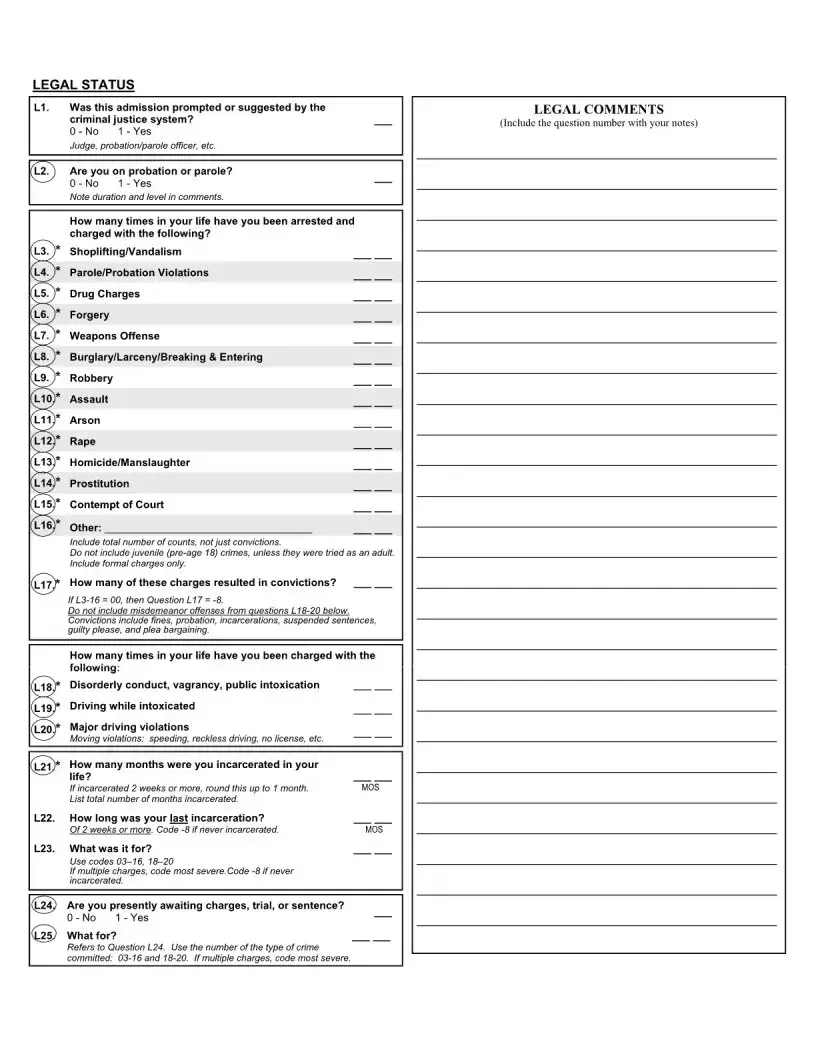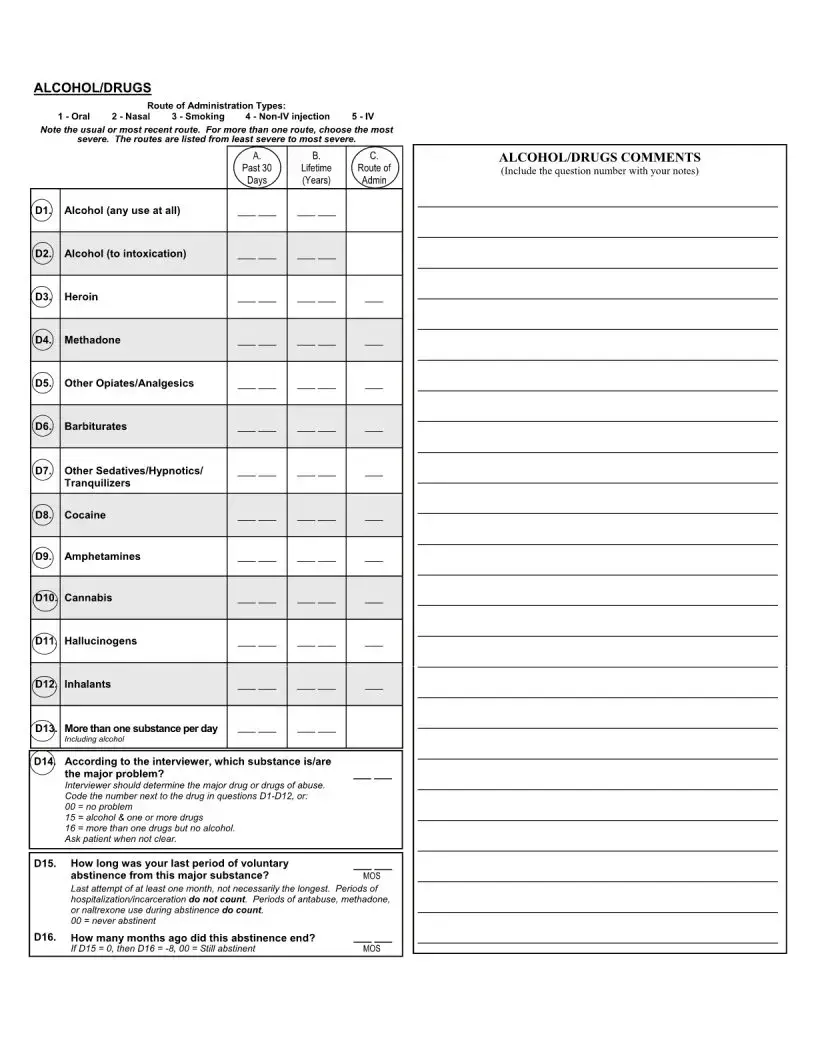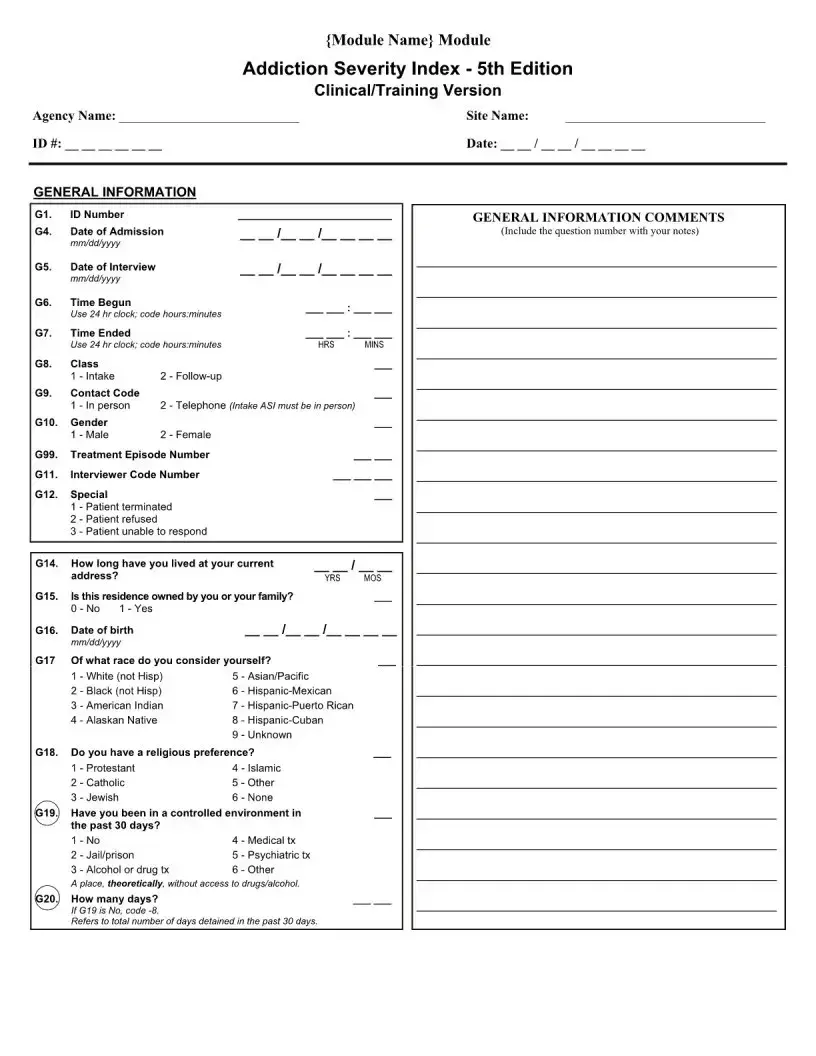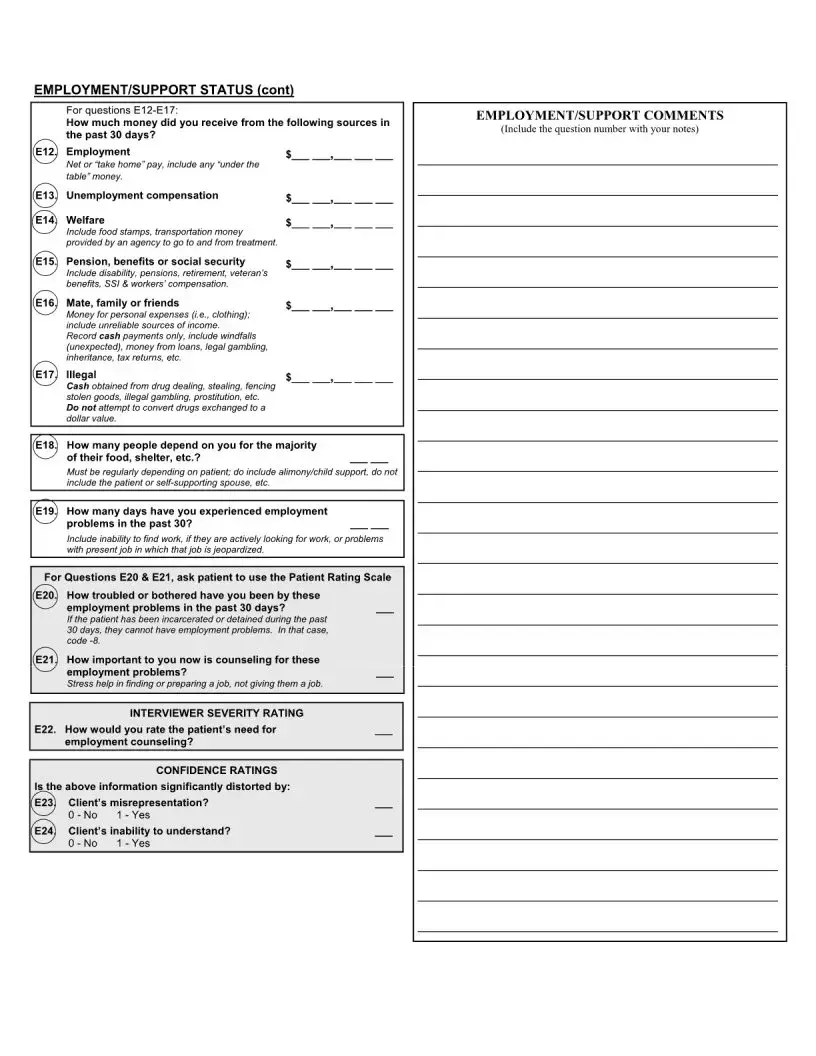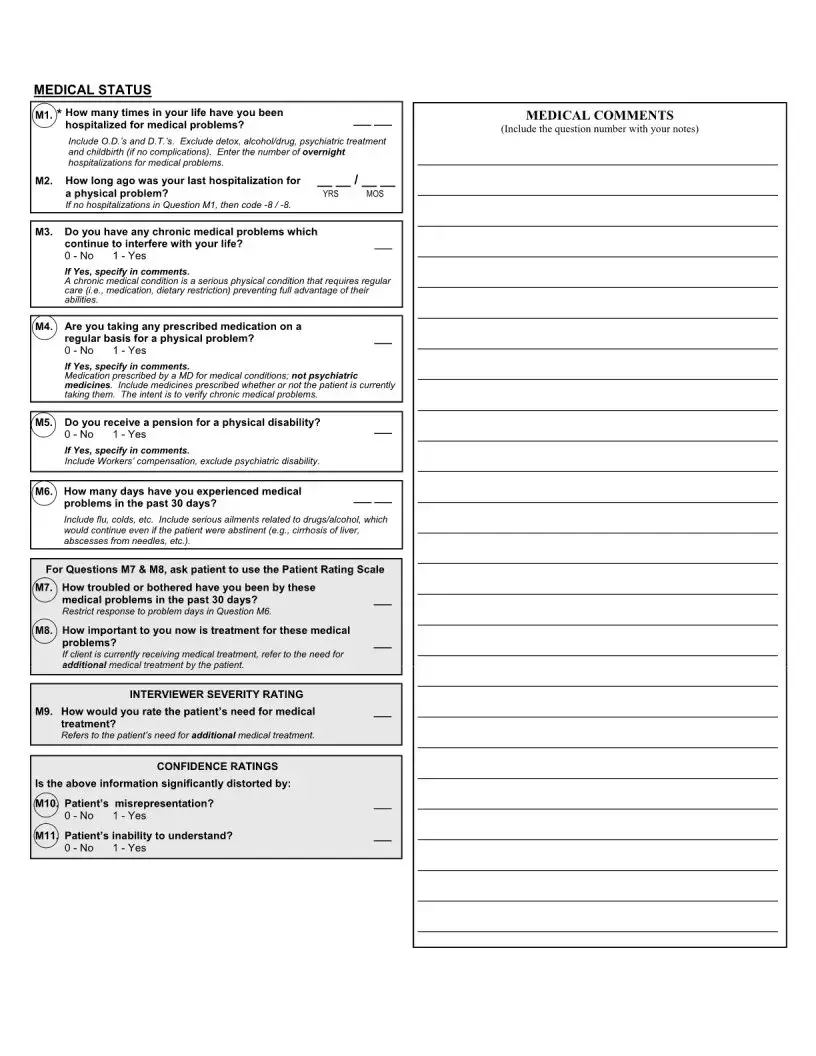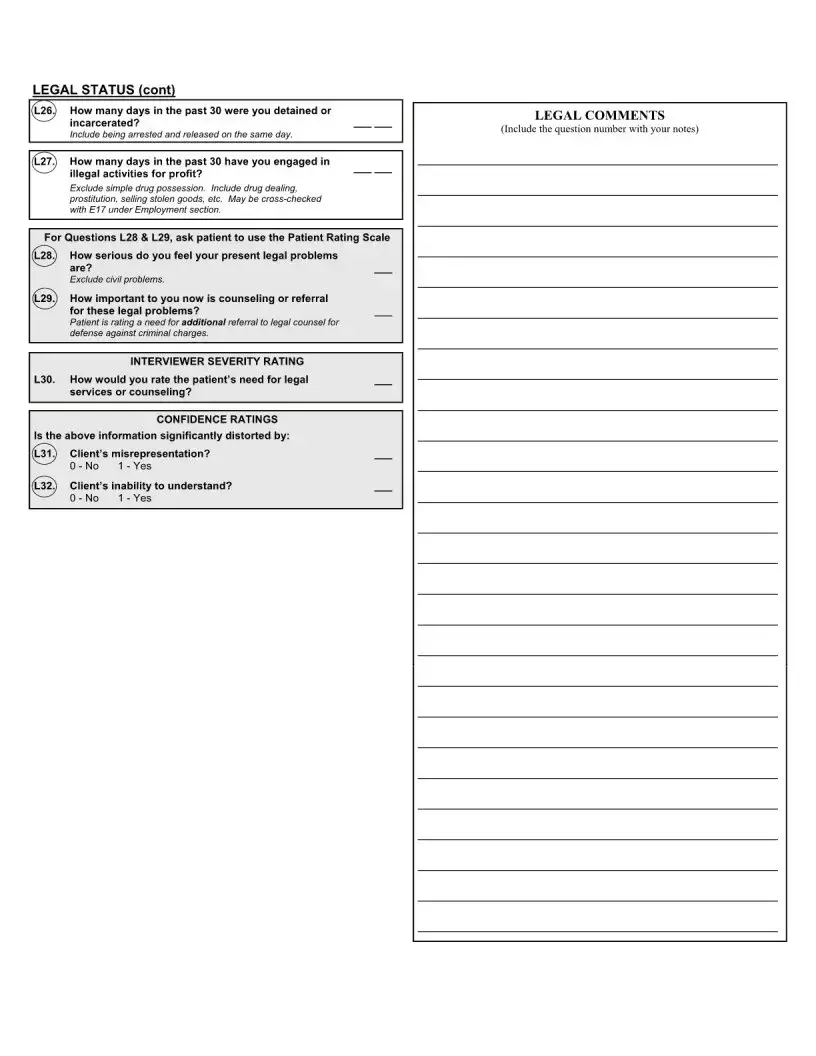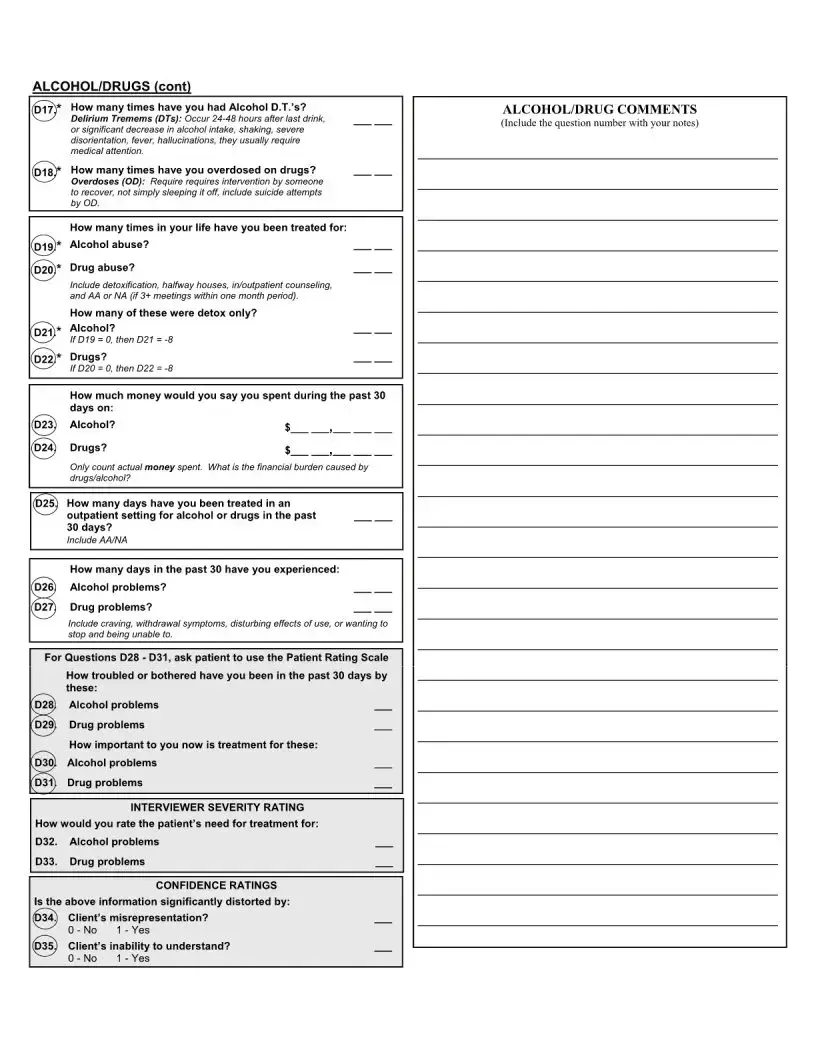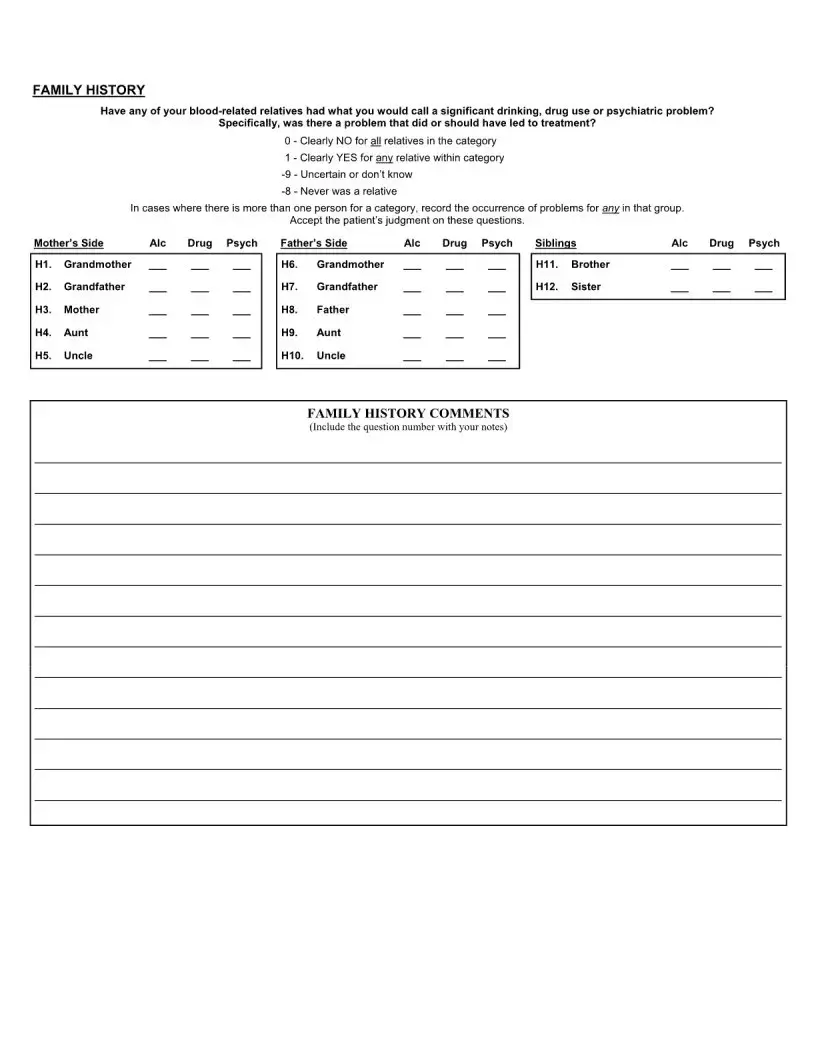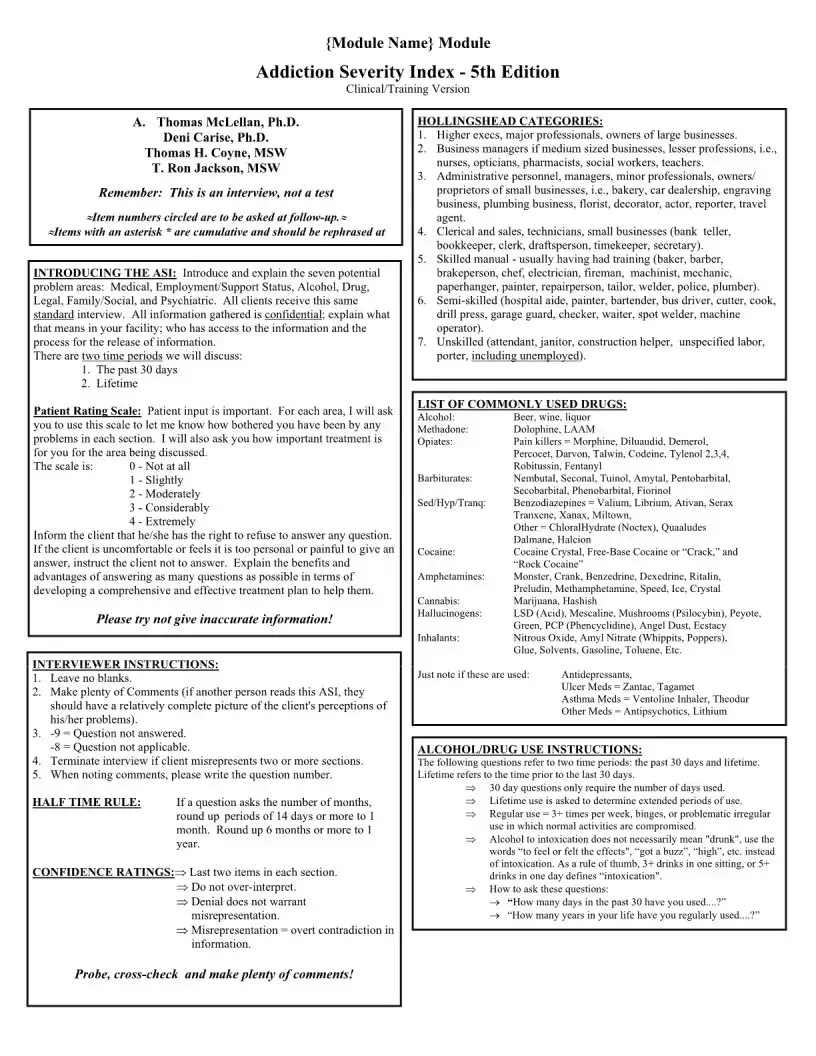Filling out the Addiction Severity form can be a challenging process. During this task, individuals often make mistakes that can affect the outcome of their assessment and subsequent treatment. One common error is leaving questions unanswered. Each section of the form is designed to gather comprehensive information. If individuals skip questions, they may miss opportunities to convey critical aspects of their situation, thereby limiting the effectiveness of their treatment plan.
Another frequent mistake lies in not providing sufficient comments or details when answering questions. Each comment must encapsulate the client’s perception of their issues. The lack of elaboration can lead to a distorted understanding of the client’s reality for anyone reviewing the form later. This may result in inappropriate treatment strategies that do not address underlying problems.
Misunderstanding the two specific time periods referenced in the form is also a significant pitfall. Clients should accurately differentiate between their experiences in the past 30 days and their cumulative life experiences. Failing to do so can lead to inaccuracies that impact the evaluation of their current addiction severity.
Another mistake occurs when individuals round their responses inaccurately. The guidelines are clear: periods of 14 days or more should be rounded up to one month, while six months or more rounds to one year. Miscalculating these timeframes may lead to an underestimation of the severity of their addiction history.
It’s critical to provide honest answers regarding substance use. Some individuals may downplay their drug or alcohol consumption, underestimating their severity. This misrepresentation can stem from fear of judgment, but it undermines their chances of receiving appropriate help. Accurate reporting is essential to creating an effective treatment plan.
Another area of confusion revolves around interpreting specific questions. For instance, clients might misinterpret the term "intoxication." It's recommended to describe the effects felt rather than just using the term "drunk." This miscommunication can lead to significant misunderstandings between the client and the interviewer.
In addition, clients can sometimes overlook the importance of indicating their right to refuse to answer any questions. It’s essential for individuals to feel comfortable expressing discomfort with certain inquiries. This transparency is crucial for establishing a trusting therapeutic relationship.
Many people also forget to include data on all medications they take regularly, especially chronic health conditions. Omitting this information can impact their treatment strategy significantly. All medications can interact with addiction treatments, highlighting the importance of full disclosure.
Finally, there is the issue of not clarifying their employment situation adequately. Employment-related questions require precise answers regarding type of work and income sources. Misrepresenting one’s work situation might conceal underlying stressors that could affect treatment success.
